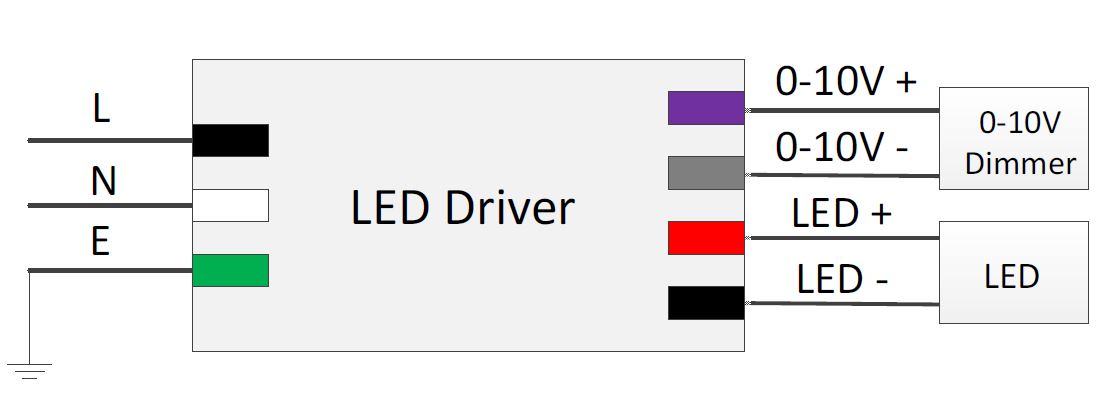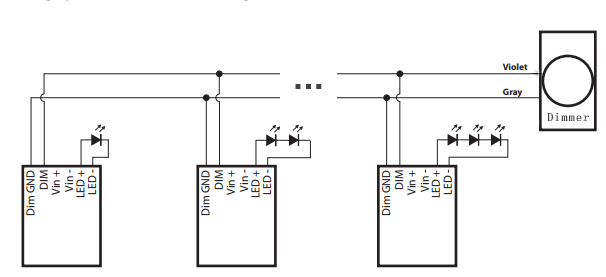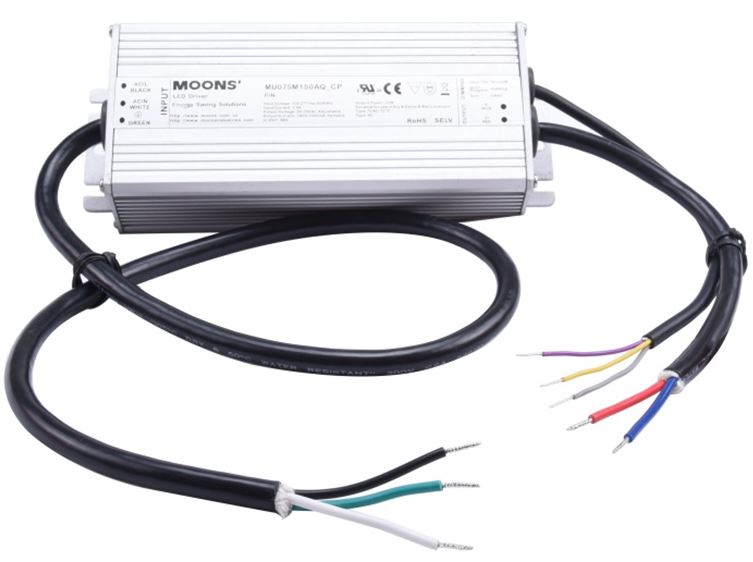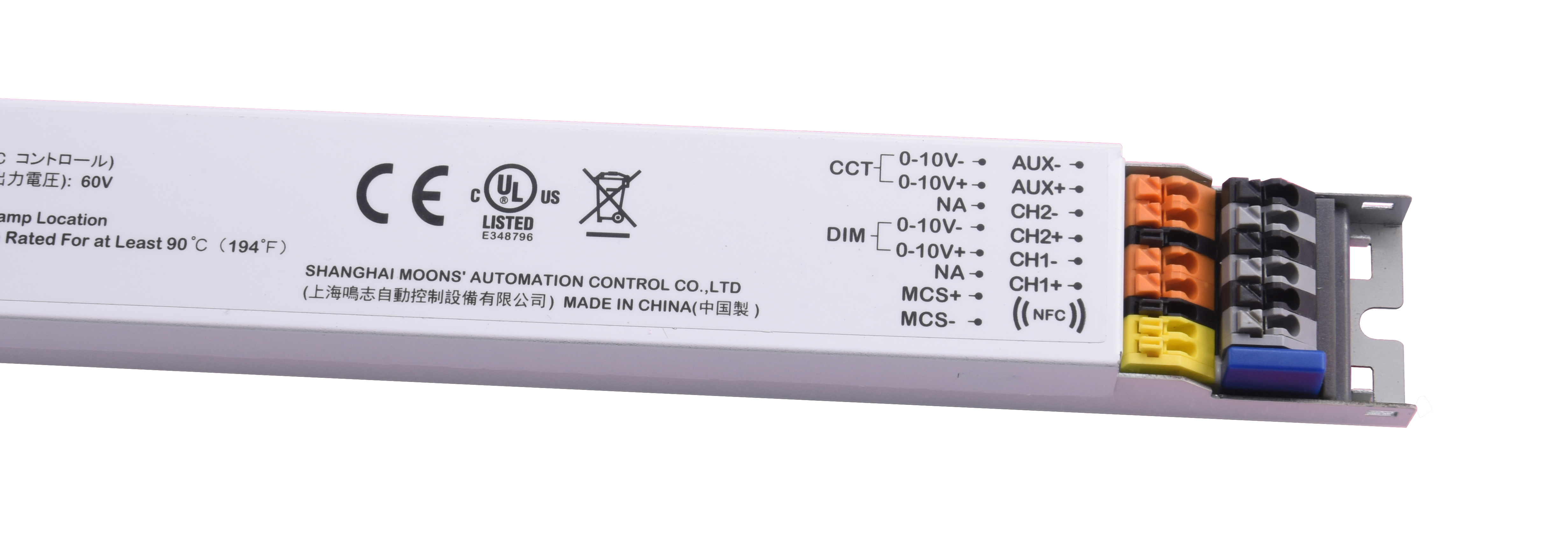0-10V Dimming Basics and Troubleshooting
1. What is 0-10V?
When used in dynamic lighting control applications, "0-10" refers to the use of an analog controller that adjusts the voltage in a 2-wire bus connecting the controller to one or more LED drivers that have a 0-10VDC dimming input. The control signal is a DC voltage that varies between zero and ten volts. It is one of the earliest and simplest electronic lighting control signaling systems. When the voltage is zero volts, the light will dim to its lowest light level. To completely turn off the lights, a switch is usually required, while at 10 volts, the light will operate at 100% brightness. Below is an example of a typical 0-10V driver. 0-10v dimming system A 0-10V dimmer (controller) is an analog device. The 0-10V dimmers are shown below.
0-10v dimming system A 0-10V dimmer (controller) is an analog device. The 0-10V dimmers are shown below.  0-10v dimmers
0-10v dimmers 2. How 0-10V Drivers work?
The dimming signal, which is connected to the driver, has a purple wire representing +10 volts and a gray wire representing the common signal. The dimming control output will be 10 volts if both wires are open. The dimming control output will be zero volts when they are touching. A voltage of 0 volts represents its minimum level, and depending on the driver, the fixture will either go into sleep mode, turn off completely, or use a dimmer switch to turn off. 0-10v dimmer wiring In all cases of 0-10VDC wiring, shielded pair wiring should be used with the shield grounded to the earth at the controller. The pair does not need to be twisted. This is particularly recommended when low-end dimming performance is of paramount importance. Analog control wiring that is not shielded can serve as antennae. A flicker effect can be caused by radiated emissions (from transformers, radio transmitters, motors, etc.) which are collected by unshielded analog control wiring and interpreted by the driver as changes in control voltage.
0-10v dimmer wiring In all cases of 0-10VDC wiring, shielded pair wiring should be used with the shield grounded to the earth at the controller. The pair does not need to be twisted. This is particularly recommended when low-end dimming performance is of paramount importance. Analog control wiring that is not shielded can serve as antennae. A flicker effect can be caused by radiated emissions (from transformers, radio transmitters, motors, etc.) which are collected by unshielded analog control wiring and interpreted by the driver as changes in control voltage. 3. 0-10V Dimming Troubleshooting
More and more 0-10V dimming lights are being used in the application, so the question of how to troubleshoot them arises often, so here are the easy steps to determine if it is a wiring problem or a driver issue. (1) Take the grey and violet wires off the dimming circuit. (2) With the power on, touch the grey and violet wires coming from the driver's side together. This is causing a short and will cause the fixture to dim to minimal (which could look off). If the fixture dims when doing step all above, you most likely have a bad dimmer or a wiring fault in the line somewhere, so it is best to exchange the dimmer or examine the wire at the dimming control and work through the line until you find the point where the issue is located. It is most likely that you will need to replace the driver if the fixture does not respond when doing this.4. Introduction of MOONS' 0-10V drivers
MOONS' CP series LED drivers are often provided standard (check spec sheets) and dim down to 7.5% at minimum light level (CLKS series LED drivers are 10%). Besides, those LED drivers are programmable with MSSL200 if you choose to set the driver's operating mode, minimal output current, and dimming plan to meet various dimming requirements. MOONS' 0-10V drivers Our 0-10V intelligent LED drivers are compatible with Lutron control systems and dim down to 0.1% at a minimum light level. MOONS' intelligent LED drivers can be configured with Smartkey or Touch Setting Tool (NFC function).
MOONS' 0-10V drivers Our 0-10V intelligent LED drivers are compatible with Lutron control systems and dim down to 0.1% at a minimum light level. MOONS' intelligent LED drivers can be configured with Smartkey or Touch Setting Tool (NFC function).  0-10V intelligent LED drivers
0-10V intelligent LED drivers